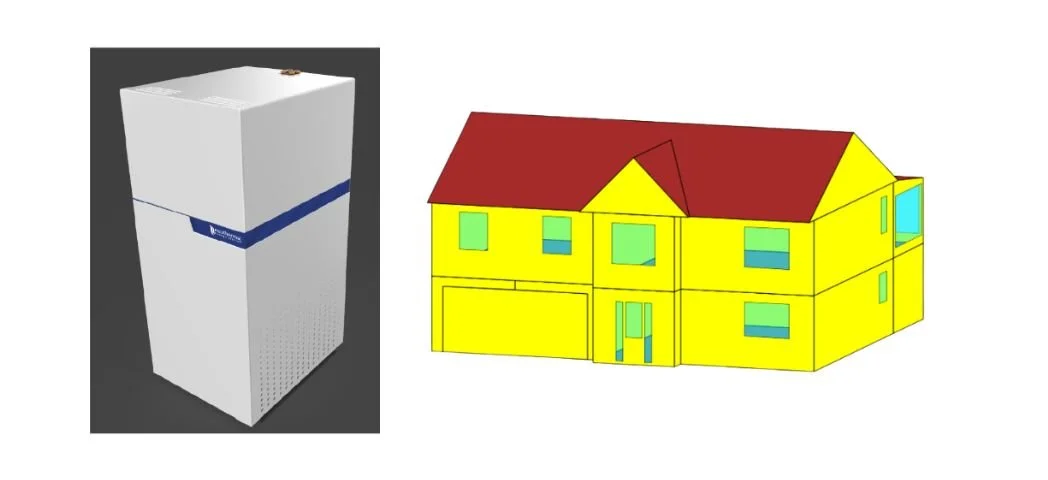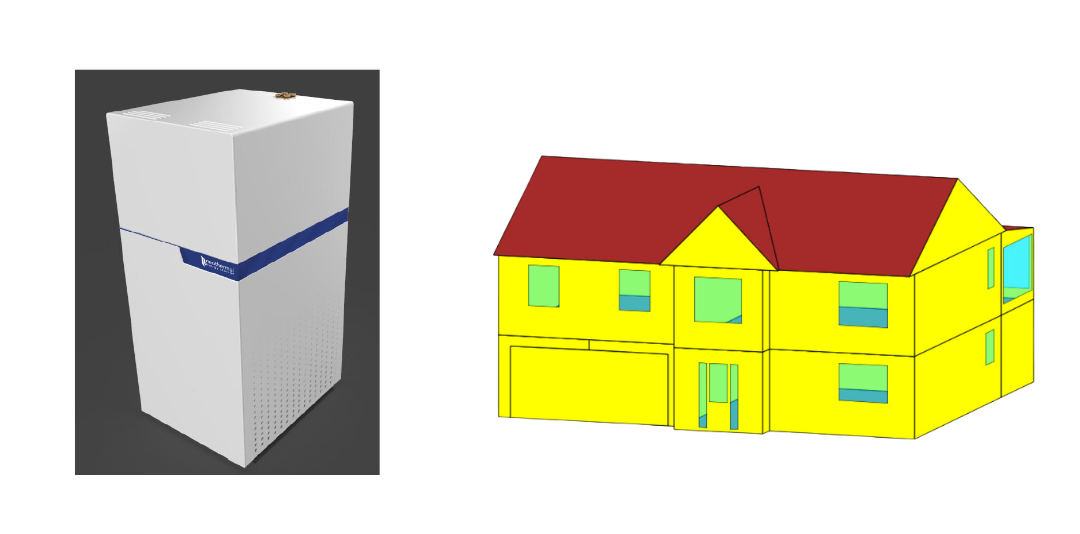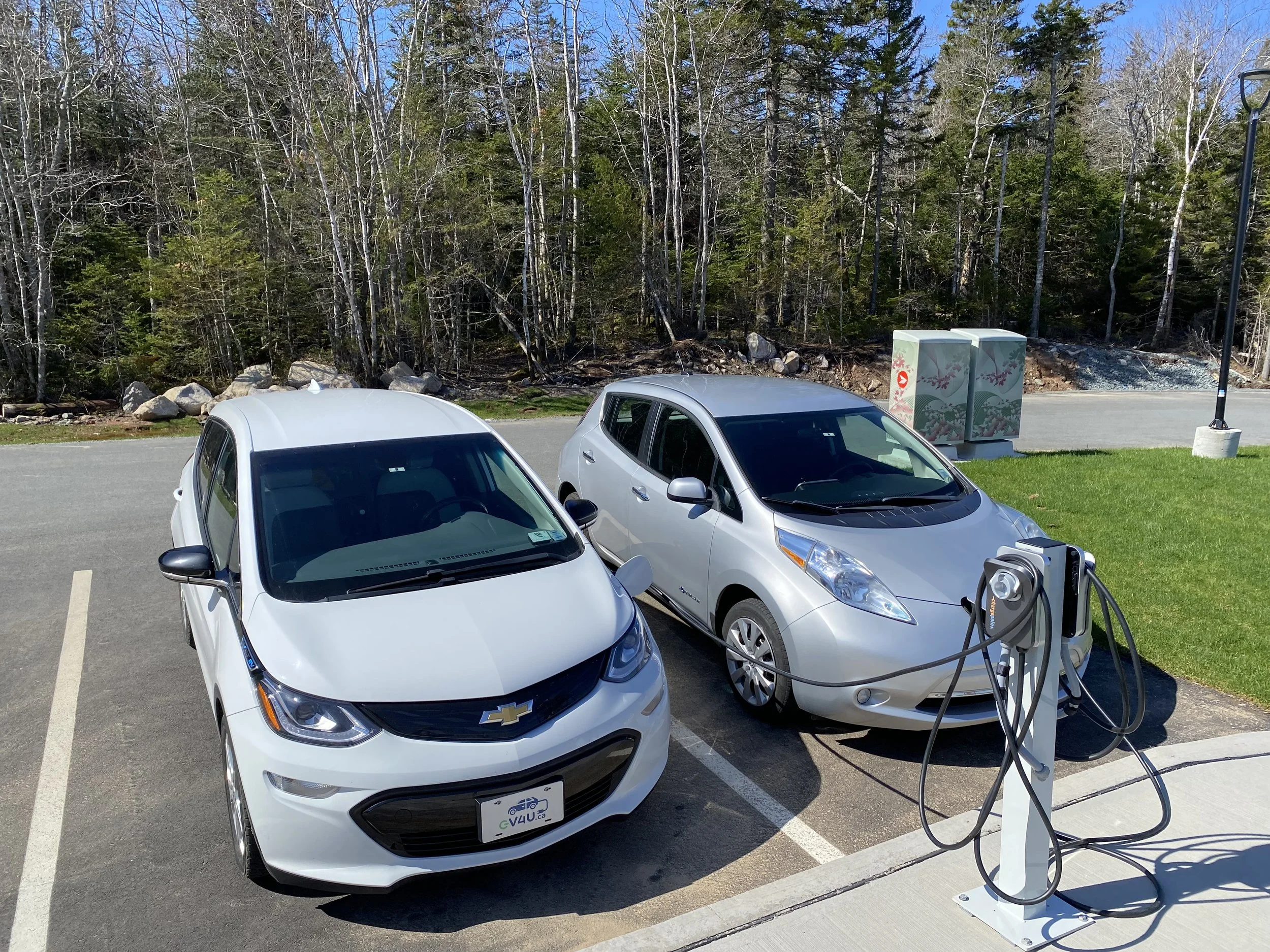Net Zero-Ready Residential Electric Thermal Storage Pilot
Net-Zero Ready Residential Electric Thermal Storage Pilot is a two-phase project to demonstrate innovative electric thermal storage (ETS) technology to accelerate the transition from fossil fuels to cleaner electricity. The ETS system will be installed in two HRM homes and is an add-on, off-peak appliance that creates a net-zero heating solution for boiler or furnace-heated homes.
Grant award: $50,000
Neothermal Energy Storage, a start-up in Bridgewater, is investigating how existing home heating systems can be adapted to become more efficient using innovative electric thermal storage (ETS) technology. This technology, when paired with existing boiler and furnace heating systems, will heat homes using off-peak electricity as an alternative to heating oil.
With help from HCi3’s Accelerating to Zero grant program, Louis Desgrosseilliers is building on his PhD research at Dalhousie University looking at chemical energy storage using salt brines. These brines have a special property: they can retain their stored chemical energy to as low as room temperature. This makes them immune to further heat loss, meaning they can efficiently store heat for later use. Desgrosseilliers is applying this useful property to home heating by exploring how salt brines can improve home heating efficiency in both boiler and furnace-heated homes.
“The salt brine is used as an energy storage medium,” explains Desgrosseilliers. The key application of this technology to home heating is its ability to store energy during off-peak hours (i.e., the middle of the night) when electricity is cheapest. The stored thermal energy can then be used during the day when it is needed to heat the home in place of burning fuel. This is significant in terms of both energy cost and greenhouse gas emissions (GHG) savings, because on-peak hours (i.e., when electricity demand is highest) often require additional energy generation from fossil fuel sources and it is more expensive to produce and deliver electricity at these times. By storing energy during the off-peak hours, heating with the ETS unit is cheaper, produces lower GHG emissions, and provides home heating electrification without growing peak electricity demand on the grid.
Example of an ETS unit.
Desgrosseilliers explains that this system is “designed for the average winter day as opposed to the worst winter day.” This means that, while the thermal storage system cannot meet 100% of a home’s annual heating demand, it is used to deliver the majority of it; the existing heating system is called on only to deliver what remains. “In the end, you get cost savings, GHG savings, and just better long-term performance of the overall system,” he continues.
To further explain how the ETS heater works in terms of off- vs on-peak hours, Desgrosseilliers continues: “[Nova Scotia Power (NSPI)]… grants off-peak electricity rates to those with oil heat, but they must have a qualifying ETS system installed to qualify. This can be done by using a standalone room ETS heater in part of the house, while oil heat is used in the remainder of the house. Despite this being rarely done, it provides… the electricity tariff framework for NSPI to qualify Neothermal ETS systems for off-peak rates in otherwise fuel-heated homes.” This has already been done for the Halifax home where the Neothermal is conducting field tests.
Unlike other more conventional electrification strategies for fuel-heated homes (i.e., heat pumps with electric baseboards), pairing the ETS unit with the fuel system allows for the exclusive use of off-peak electricity. Due to the low electricity demand to run the ETS unit, this project can also work in tandem with a battery at a moderate cost for additional efficiency. Desgrosseillers explains, “you could even have all of the electrical demand of the system be run [from] off-peak electricity by charging [the battery] overnight just for the purpose of running the pumps and the control equipment [during the day], which is very low power.”
So far, Neothermal has completed a feasibility study, which included detailed energy modelling of two single-family homes in Halifax. The results from the energy modelling, the feasibility study, and NSPI grid mix projections suggest that this fuel-shifting technology could result in reductions of 1000-2000 kg CO2 emissions/year for each home through displacing oil for home heating. This amount of CO2 is equivalent to driving 5,000-10,000 km in a gasoline car annually. Desgrosseilliers is now looking for additional resources to support the cost of prototype manufacturing for deployment of an ETS unit in a test home in the next phase of work. The project had an early setback when an in-kind manufacturing partnership for the ETS prototype system fell through, but Desgrosseilliers is confident in the potential of this technology, and the impact it could have on energy efficiency in residential buildings.





